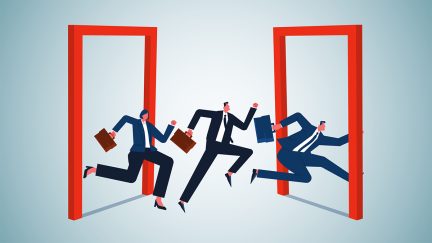For more stories like this, sign up for the PLANSPONSOR NEWSDash daily newsletter.
Pandemic Has Brought Need for Financial Wellness to a Head
Even before the COVID-19 pandemic hit the U.S. in February 2020, 52% of employees felt stressed, according to a PLANSPONSOR webinar.
To effectively run a company today means having a financial wellness program that speaks to the concerns of employees, which have shifted in light of COVID-19. This was one of the key points made during Thursday’s “Creating an Effective Financial Wellness Program” webinar in PLANSPONSOR’s Plan Progress series.
Already, before the pandemic hit at the outset of 2020, 52% of employees felt financially stressed, said Amy Lins, senior director, enterprise learning, at the Money Management Institute (MMI). Surveys done by leading trade organizations and asset management firms since the outset of COVID-19 all point to how stressed out employees are, Lins said.
“The pandemic only made that worse. I cannot imagine they have gotten better,” Lins said. Employees are spending three to four hours at work dealing with finances and are having to leave work. Nationwide, 47% of households cannot afford a $400 emergency. They are relying on credit instead.”
‘Underbanked,’ No Retirement Savings
Perhaps most startling, “31% have no retirement savings,” Lins said. They’re underbanked, with some cash-strapped workers resorting to using prepaid debit cards and check cashing. “These are high-cost transactions,” she noted.
While this might sound like the extreme end of the scale, Lins said, “42% of Americans are in this situation, and it’s a higher percent for low-income folks. Even for those in jobs paying $100,000 or more a year, 40% of employees want to obtain more credit, and have been turned down.”
What’s an employer to make of all this? Listen to employees, Lins said. “Forty percent want their employer to help them achieve financial security, MMI data shows. Twenty-eight percent have taken loans from their 401(k) accounts,” she said.
COVID-19’s impact on the U.S. economy overall and on an individual’s personal finances has most definitely “eroded financial and housing stability, and it has disproportionately affected people of color,” Lins said.
Pandemic Resources Winding Down
As bad as all this may sound, it could get worse, Lins said, as pandemic resources are ending. “The eviction moratorium ends this month. Mortgage forbearance is ending in September. People’s incomes are down $7,000, and their debt load is up $7,000,” she said. “If you’ve been paying rent, student loans and credit cards have given people a break [during the pandemic].”
Lins said when these social services come to an end, more employees are going to be in financial distress.
Moderator Rebecca Moore, managing editor of PLANSPONSOR.com, said, like it or not, employers are squarely at the center of the issue, since most people rely on their employer for their retirement and financial wellness benefits.
The best way for employers to take the bull by the horns with regard to financial wellness is “to determine the specific financial wellness needs of their workforce,” said April Bettencourt, global employee benefits manager at VSP Global. They can uncover needs by surveying employees on what they would like to see in their financial wellness programs, she added, noting that her firm successfully did just that.
Kelli Send, senior vice president of Francis Investment Counsel, agreed with Bettencourt, saying plan sponsors should “figure out the competencies and financial situation of [their] specific population.”
Changing Financial Wellness Landscape
Employers also need to be mindful of how COVID-19 has changed the workplace and health care, Send said. This could mean offering an annual blood pressure test, she said, or it could mean issuing an annual, anonymous health care survey.
“That is where the industry seems to be going,” Send said.
Lins said financial wellness programs are organic and need to be changed as employees’ needs change, so human resource (HR) departments should be sensitive to this. Based on its research on personal finances, the nonprofit Financial Health Network of Chicago, for instance, developed a wellness assessment called its FinHealth Score, Lins said. HR departments would do well by employees if they conducted similar assessments when designing their financial wellness programs, she said.
“The needle is moving,” she said. “Sometimes people don’t know what they want,” like a budgeting module on how to get out of debt.
“That is the type of survey you want to use,” Lins said.
You Might Also Like:
Benefits Continue as Major Factor in Employee Retention
Plan Sponsors Demonstrate Increased Commitment to Financial Wellness
Debt Burdens Can Delay Retirements
« DB Plan Sponsors Don’t Have to Fear Investing in Real Assets


